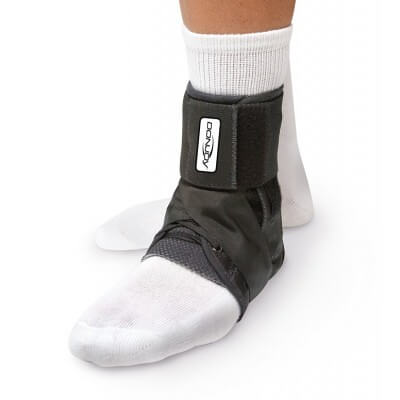03/17/2024
A scenario familiar to many unfolds as a high school basketball player eagerly returns to the court after weeks of dedicated recovery from an ankle sprain sustained during practice. Her rehabilitation efforts included icing, crutch use, taping, and rigorous exercises. However, her enthusiasm to return to the sport is short-lived as a misstep in her first game back results in a re-injury, a common occurrence in sports like basketball, football, volleyball, and soccer, as well as during running, jumping, and hiking activities.
In the United States alone, ankle sprains are estimated to happen over 20,000 times daily, often in sports requiring rapid changes in direction or speed. An ankle sprain involves the excessive stretching, partial tear, or complete rupture of ligaments, the connective tissues linking bones together. Despite the efforts of athletes to return swiftly to their sport, the healing process for sprained ankles typically spans 6-12 weeks, during which ligament stability remains compromised. Unfortunately, many athletes, like the one in our scenario, find themselves in a cycle of recurring injuries, potentially leading to chronic ankle instability.
As both a physical therapist and a sports enthusiast, I frequently get asked from athletes and their parents how to prevent ankle sprains. Common questions revolve around ankle braces, taping methods, suitable footwear, and specific exercises to mitigate risks.
Unfortunately, there aren’t simple answers to these questions. A significant amount of research has been done regarding ankle sprains in athletes over the years, so let’s discuss some of these findings further:
Should an athlete wear an ankle brace on the injured side when returning to play?
Research suggests that wearing some form of bracing on the injured ankle can be beneficial, particularly when athletes rush back to their sport within weeks. Studies have indicated reduced re-injury rates with bracing, offering external support while ligaments, tendons, and muscles heal.
What about ankle taping? Is this more effective than wearing a brace?
Similarly, ankle taping is effective in preventing ankle sprains. While both bracing and taping are viable options, braces may offer prolonged support and cost-effectiveness compared to tape, which requires more frequent replacement and may be less reliable in certain conditions. However, taping is still a better solution than no support, and it can be less restrictive & bulky compared to bracing for sports like gymnastics.
Are there certain shoes that seem to help prevent ankle sprains?
There is minimal evidence supporting the superiority of high-top shoes over low-top shoes in reducing the risk of ankle sprains. However, orthotics may be recommended for individuals with specific foot and ankle issues, such as high arches or flat feet, to improve alignment and stability.
What kinds of exercises should a person do following an ankle sprain?
With rehabilitation exercises post-injury, a progressive approach is key, starting with gentle range of motion, stretching, and strengthening exercises, before transitioning to balance as the athlete’s condition improves. Balance exercises, such as standing on one leg or utilizing balance equipment, play a crucial role in enhancing ankle stability and should be integrated into regular exercise routines.
When is it okay to stop ankle rehabilitation exercises?
It’s worth noting that ankle rehabilitation exercises should ideally be a permanent routine for an athlete, as studies have shown that instability may persist even years after the initial injury. While participation in sports inherently challenges ankle joints, dedicated balance exercises can help address weaknesses or asymmetries that may go unaddressed during regular play.
For further information on foot and ankle conditions and treatments, please visit our page or contact us at (402) 609-1750.



